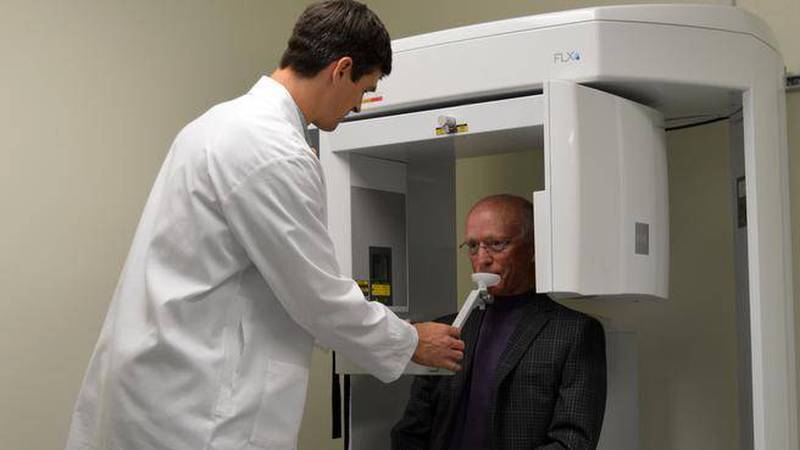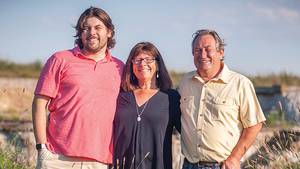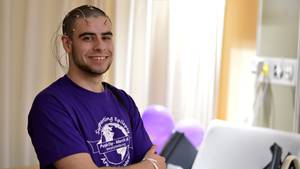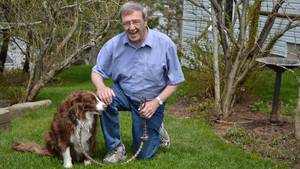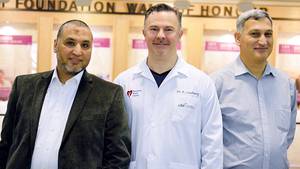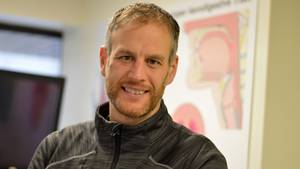It began during a bike ride. A very long bike ride.
Five years post-treatment, Bruce Ross and his specialist, Dr. Chad Robertson were part of a charity cycling team travelling across the Rocky Mountains from Vancouver to Austin, Texas to help people living with cancer and other diseases.
Dr. Robertson is a surgeon with the Department of Oral and Maxillofacial Surgery at the QEII. Now retired, Bruce is the former president of the medical imaging company, Picker International Canada. One day as the two men rode, Bruce asked what he could do to help Dr. Robertson’s department.
“I told him we could really use a cone beam CT scanner,” Dr. Robertson recalls. “These imaging machines provide quality images with less radiation exposure than a traditional CT. They are rather expensive but have the potential to benefit many patients. Bruce liked the idea.”
Bruce had a very good reason to offer his support to the QEII’s Oral and Maxillofacial Unit — it saved his life.
In the fall of 2005. he visited a specialist about a little red blotch on his gum just above his front tooth, it proved to be cancerous. A CT scan revealed the cancer had spread to the bone in his jaw.
Dr. Robertson removed a segment of Bruce’s upper jaw, including the teeth, right up to his nose. A prosthesis was made to fill the defect, but the cancer had already spread to lymph nodes in his neck. A total of 53 lymph nodes were removed as well.
A long and difficult bout of radiation and chemotherapy followed.
Now, a decade after his cancer diagnosis, much of Bruce’s life has returned to normal. He’s cancer-free and back doing most of the things he loved to do before his treatments started. At 66 years of age he’s back to his fighting strength.
Bruce and his wife, Lynnda, graciously provided the funds to the QEII Foundation for the purchase of the cone beam CT scanner, which has dramatically improved imaging capabilities. This technology now resides in the Bruce and Lynnda Ross Maxillofacial Imaging Suite at the QEII’s VG site.
Bruce credits a commitment to physical activity as one of the keys to his dramatic recovery and positive attitude through it all. “I’ve had prosthesis for eight years. They’re only supposed to last eight years, but mine is still working. The doctors convinced me that if I stay in shape, if I keep my vascular system in good shape, the tissue in my mouth will continue to allow it to fit right. It’s still tight.”
Dr. Robertson agrees that Bruce’s physical condition played a huge part in his recovery.
“Bruce had what we call concurrent chemo-radiation therapy where you receive chemotherapy and radiation therapy at the same time. That combination can be quite toxic. The better shape you are in, the more likely you are to come through it well.”
Bruce remains a big proponent of cancer prevention. “The treatment is sometimes worse than you can imagine,” he says. “Why not do everything you can to prevent it? Staying active makes a lot of common sense.”

